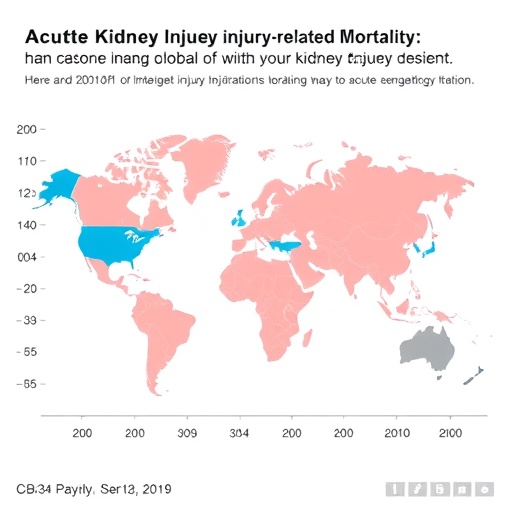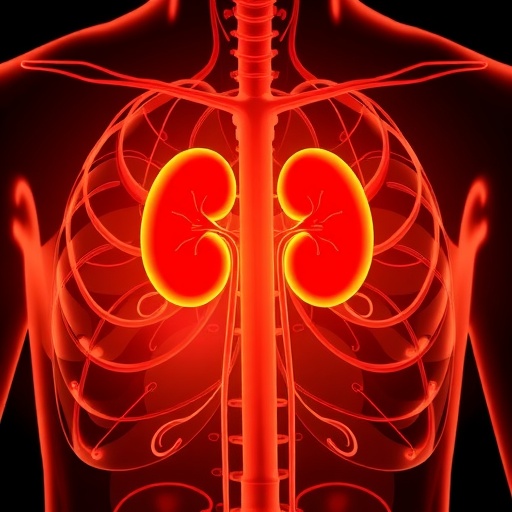DALLAS – April 11, 2019 – Nearly half of current hospital admissions for heart failure are caused by a type of the disease with no treatment options. Cardiology researchers at UT Southwestern Medical Center are changing that reality with a fresh approach, recently published in Nature.
Watch video: One-two punch helps explain greatest unmet need in cardiology
“There are two types of heart failure. One is called HFrEF, for which we have a number of therapies, including medications, devices, and transplants. The other – HFpEF – has zero options,” explained UT Southwestern Chief of the Division of Cardiology and Professor of Internal Medicine and Molecular Biology Dr. Joseph Hill.
“HFpEF is the single greatest unmet need in cardiology. Finding a new way to examine it represents a significant advance, as it provides a model necessary to develop and test therapies that could save lives worldwide,” said Dr. Hill, who holds the James T. Willerson, M.D. Distinguished Chair in Cardiovascular Diseases and the Frank M. Ryburn, Jr. Chair in Heart Research.
The Centers for Disease Control and Prevention estimates that 5.7 million people have heart failure in the U.S.
Heart failure with preserved ejection fraction (HFpEF) is a lethal disorder for which there are no effective clinical therapies. The heart muscle becomes too stiff to pump blood efficiently. Most HFpEF patients are obese, have diabetes, and have metabolic syndrome.
Heart failure with reduced ejection fraction (HFrEF) functions differently. In HFrEF, also known as systolic HF, the heart muscle is not able to contract adequately and, therefore, expels less oxygen-rich blood into the body. Previous heart failure models of HFpEF focused on raising the levels of an enzyme called NO, or nitric oxide synthase.
However, in HFpEF, there is actually too much of the NO enzyme. A strike on this target – with a medical inhibitor, for example – would solve the problem. According to Dr. Hill, there are already FDA-approved drugs that inhibit this NO-synthesize enzyme, which could facilitate developing new treatments rapidly.
The two-hit model
Dr. Hill’s team looked at current, ineffective models of HFpEF and concluded that none of them correctly mirrors the realities they see clinically in human patients. They found that combining a high-fat diet with a drug that raises blood pressure gave them a “two-hit” model, like a one-two punch to the disease.
Next, the team examined results of their model at the cellular level and compared them with human cells. They found that they had replicated the human condition, thereby providing scientists an accurate biological picture that can greatly advance the development of new treatments.
“A recognized research gap in the HFpEF field is the lack of relevant experimental models that adequately represent the progression of this complex disorder. This study is an example of how advances in HFpEF models can lead to a better understanding of the disease pathophysiology and new ideas for therapeutic strategies,” said Dr. Bishow Adhikari, a program officer for the study and a scientist with the National Heart, Lung, and Blood Institute, part of the National Institutes of Health, which helped fund the study.
Millions of people worldwide have both obesity and diabetes. The research team believed that these two conditions would lead to HFpEF – a hypothesis they confirmed by duplicating the disease conditions and examining changes at the molecular level.
“Heart failure is one of only two forms of cardiovascular disease that is increasing. It’s exploding around the world,” Dr. Hill said. “We dance around the edges of it, treating patients’ diabetes, blood pressure, and other conditions. With this model, we’ll be able to get to the underlying cause so we can get to the root of the problem.”
The UT Southwestern researchers are currently taking steps toward moving into human clinical trials based on findings in their preclinical two-hit model. With time, they expect that all heart failure patients will have treatment options.
###
Dr. Hill is Director of the Harry S. Moss Heart Center and Editor-in-Chief of Circulation.
Additional UT Southwestern researchers who worked on the study include: Dr. Gabriele G. Schiattarella, postdoctoral researcher; Dr. Francisco Altamirano, Assistant Instructor of Internal Medicine; Dr. Dan Tong, cardiology fellow; Dr. Kristin M. French, postdoctoral researcher; Dr. Elisa Villalobos, postdoctoral researcher; Soo Young Kim, graduate researcher; Dr. Xiang Luo, Assistant Professor of Internal Medicine; Nan Jiang, senior research scientist; Herman I. May, researcher; Dr. Zhao V. Wang, Assistant Professor of Internal Medicine; Theodore M. Hill, researcher; Dr. Pradeep P.A. Mammen, Associate Professor of Internal Medicine; Dr. Jian Huang, research scientist; Dr. Sergio Lavandero, adjunct professor; and Dr. Thomas G. Gillette, Associate Professor of Internal Medicine. Researchers from Johns Hopkins University and the University of Chile also contributed to the study. Dr. Mammen holds the Alfred W. Harris, M.D. Professorship in Cardiology at UT Southwestern.
About UT Southwestern Medical Center
UT Southwestern, one of the premier academic medical centers in the nation, integrates pioneering biomedical research with exceptional clinical care and education. The institution’s faculty has received six Nobel Prizes, and includes 22 members of the National Academy of Sciences, 17 members of the National Academy of Medicine, and 15 Howard Hughes Medical Institute Investigators. The full-time faculty of more than 2,500 is responsible for groundbreaking medical advances and is committed to translating science-driven research quickly to new clinical treatments. UT Southwestern physicians provide care in about 80 specialties to more than 105,000 hospitalized patients, nearly 370,000 emergency room cases, and oversee approximately 3 million outpatient visits a year.
Media Contact
Lori Soderbergh
[email protected]
https:/




